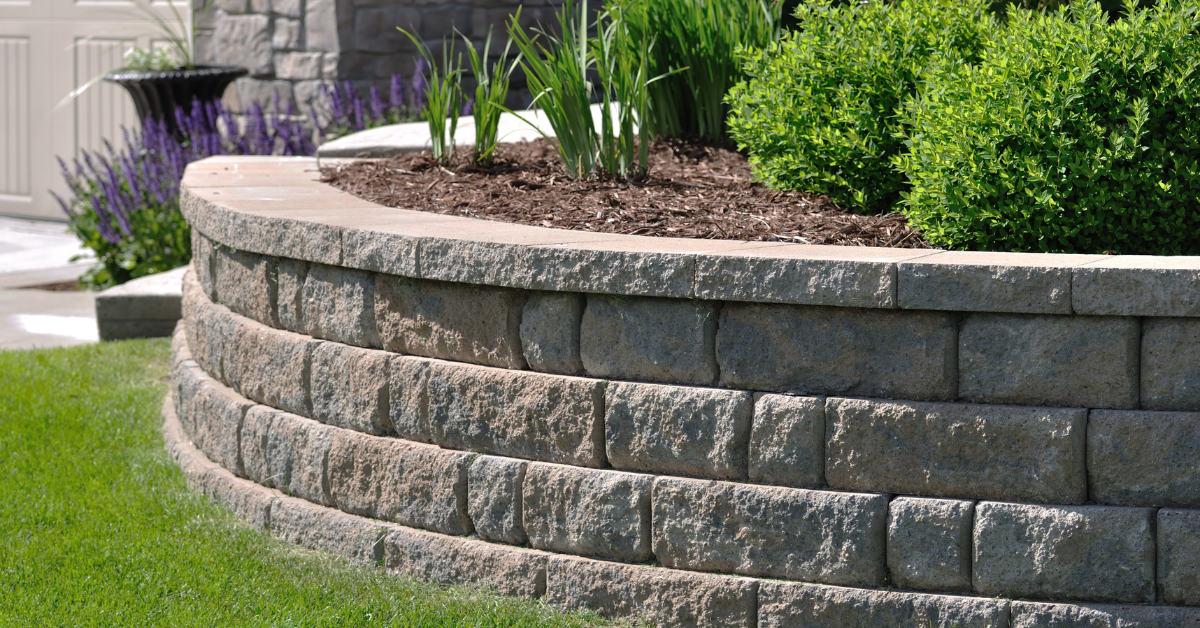Retaining walls are a crucial element in any landscaping or construction project. They are designed to hold back soil and prevent erosion, providing stability and support to the surrounding area. Two of the different types of retaining walls available to you are gravity walls and reinforced retaining walls. Here are some of the key factors to consider when choosing between these two types of retaining wall construction.
Understanding Retaining Walls
Retaining walls serve a crucial purpose in construction and landscaping projects. They are built to prevent soil erosion, manage water flow, and provide support to the surrounding area. Two of the primary types of retaining walls are gravity and reinforced. Not only are these walls designed differently but they also serve different purposes.
Gravity Retaining Walls
Gravity retaining walls are one of the most common types of retaining walls. They rely on their weight and the force of gravity to hold back soil and provide stability.
Design and Materials
Gravity retaining walls are typically constructed using heavy materials, such as stone, concrete, or brick. The base of the wall is wider than the top, creating a trapezoidal shape. This design ensures that the wall’s weight is distributed evenly and that the pressure from the soil is distributed evenly as well. The friction between the wall and the soil it is retaining add to the wall’s stability.
Advantages
- Simple and relatively inexpensive construction
- Aesthetically pleasing, as they can be built with a variety of materials
- Can be used for both small and medium-sized projects
Disadvantages
- Limited height (typically not recommended for walls taller than 4 meters)
- Can require a significant amount of excavation and base preparation
- May not be suitable for areas with unstable soil or high water tables
Reinforced Retaining Walls
Reinforced retaining walls, also known as mechanically stabilized earth (MSE) walls, rely on reinforcement materials, such as steel or geosynthetic materials, to provide additional strength and stability to their construction.
Design and Materials
Reinforced retaining walls are constructed using a variety of materials. These include:
- Concrete
- Steel
- Timber
These walls often feature a series of horizontal reinforcement layers embedded within the soil behind the wall. The reinforcement layers can be made from steel bars, steel mesh, or geosynthetic materials, such as geogrids or geotextiles. The layers are connected to the wall face, providing additional support and preventing the soil from sliding or collapsing.
Advantages
- Greater flexibility in terms of design and height
- Enhanced stability and resistance to soil pressure
- Suitable for a wide range of applications, including commercial, residential, and infrastructure projects
Disadvantages
- Higher costs compared to gravity walls- this is due to the need for reinforcement materials and specialized construction techniques
- More complex design and installation process
- Requires professional engineering expertise for proper design and construction
How to Choose the Right Type of Retaining Wall
When deciding between gravity and reinforced retaining walls, several factors should be taken into consideration. These factors include:
- Height and size of the wall: If your project requires a retaining wall taller than 4 meters, a reinforced retaining wall is likely the better choice. Gravity walls are more suitable for smaller, lower height projects.
- Soil conditions: Reinforced retaining walls are better suited for areas with unstable soil or high water tables, as they provide greater stability and support compared to gravity walls.
- Aesthetics: If you’re looking for a more natural or traditional look, gravity walls constructed with stone or brick may be the preferred option. Redi-Rock is also a popular option as it is designed to look like a variety of natural stones but is made with incredibly strong concrete.
- Budget: Gravity retaining walls are typically less expensive to construct, as they don’t require reinforcement materials or specialized construction techniques. However, the overall cost difference will depend on the size, height, and complexity of the project.
- Maintenance: Reinforced retaining walls generally require less maintenance over time, as they are designed to withstand greater pressure and resist deformation. Gravity walls may require more frequent inspection and maintenance, particularly if constructed with materials that are susceptible to weathering or erosion.
- Environmental impact: Both types of retaining walls can have an impact on the surrounding environment. Proper design and construction are crucial to minimizing this impact, such as controlling water runoff and preventing soil erosion. It’s essential to consult with an experienced engineer to ensure the right type of retaining wall is chosen for your specific site and project requirements.
The Next Step
Gravity and reinforced retaining walls serve different purposes in the realm of retaining wall construction. Both types of walls offer unique advantages and disadvantages, and the right choice depends on the specific requirements of your project. By understanding the differences between these two types of retaining walls, you can make an informed decision that best meets the needs of your construction or landscaping project. Although this can be a daunting decision, here are Excel Walls we have over 25 years of industry experience to help. Get in touch today!


